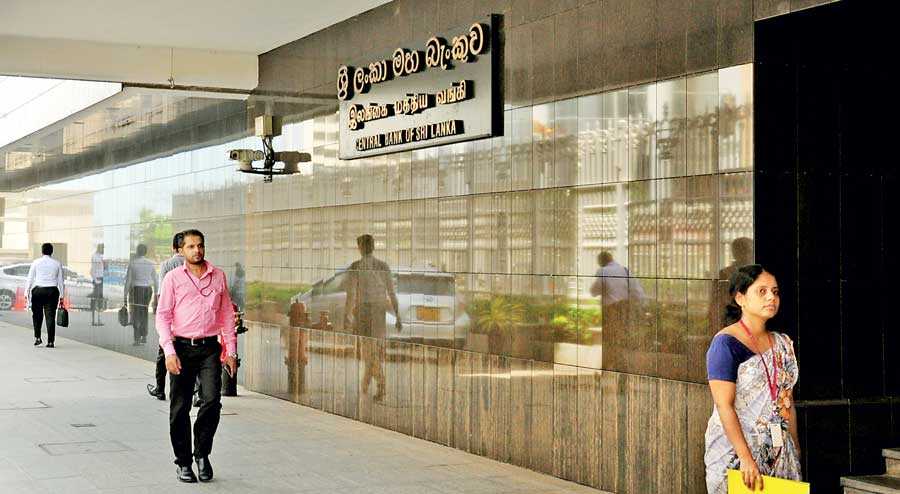Saturday Dec 13, 2025
Saturday Dec 13, 2025
Tuesday, 4 June 2019 00:00 - - {{hitsCtrl.values.hits}}

 The regular monetary policy reviews of the respective central banks are something that is watched closely by financial market participants in every country. This is no different in Sri Lanka as well. Especially the Treasury bond market participants try to predetermine the direction of interest rates, which could determine the amount of profits they make. What is of interest to them is whether the Central Bank would increase or decrease policy rates.
The regular monetary policy reviews of the respective central banks are something that is watched closely by financial market participants in every country. This is no different in Sri Lanka as well. Especially the Treasury bond market participants try to predetermine the direction of interest rates, which could determine the amount of profits they make. What is of interest to them is whether the Central Bank would increase or decrease policy rates.
Currently there are expectations of a reduction in policy rates by the Central Bank.
Different types of interest rates
To start with, there are many interest rates. Firstly the market interest rates such as the savings deposit rates and fixed deposit rates. Then there’s lending rates, which is the cost of borrowing for companies (large corporates and small enterprises) and individuals. The rates offered by each institution varies. Usually the banks offer lower rates, while finance companies offer higher rates. That is part of the respective business models.
Then there’s the Treasury bill and bond rates. Treasury bills and bonds are methods in which the Government raises funds for its expenditure. The bond market participants are mostly concerned about these rates as that’s what determines their profitability. They are not so much concerned about the deposit and lending rates mentioned above.
Then there’s the policy rates of the Central Bank – i.e., Standing Deposit Rate, the lowest rate at which the Central Bank would absorb excess money in the banking system. And the Standing Lending Rate, which is effectively the highest rate at which the Central Bank would inject money to the banking system. It is these rates that the Central Bank could change (up or down) at the monetary policy review, which is of interest to market participants. However, that is due to the assumption that such changes in the policy rates could affect the treasury rates (and market lending and deposit rates).
It is true that all interest rates mentioned above are linked to some extent and they tend to move in the same direction. But it may not happen always. There are unique factors affecting each type of interest rate.
Market deposit rates are already coming down
What’s the current trend in terms of market lending and deposit rates? The banks seem to be reducing deposit rates. This is possibly a reflection of the slowing demand for credit (or loans) in the economy. The data for early part of 2019 indicates that the increase in loans in the economy is slowing down sharply. The sluggish economic activity is likely a prime cause for the reduction in demand for loans. If the demand for loans is less, there is less incentive for Banks to raise more deposits. They are in the business of lending what they get through deposits.
Therefore, naturally the trend is for the banks to reduce deposit rates. They just don’t need so much money by offering high deposit rates. Therefore even without any policy action by Central Bank, the market deposit rates have already started to come down.
A treasury rate fall could trigger foreign outflows
Treasury bill and bond rates have also started to come down in recent weeks. In the case of Treasury bill and bond rates, if the Government borrowing requirement escalates sharply, the rates could still increase – especially if Government revenue falls and expenditure rises. On the other hand, if foreign investors holding treasury securities, start selling (or exiting), rates could rise. The treasury market still has over $ 700 m of foreign investments which could exit.
The actions of foreign investors would depend on domestic factors (political instability, tensions, economic growth, etc.) and international factors such as global interest rates. The fact that treasury rates in USA coming down in recent times could be a deterrent for foreign investors to exit places such as Sri Lanka which still offers much higher treasury rates. But the Central Bank should be wary that if rates fall too much, it would give an incentive for foreigners to exit, as domestic factors such as growth and political stability is not great presently.
Is there a discrepancy in policy rates?
The Central Bank’s Standing Lending Rate of 9%, is way lower than market lending rates and even treasury rates. It is possibly too low to start with. If at all it is the Central Bank’s Standing Deposit Rate which is at 8% that could reduce. Even then, the average market deposit rate is at 9% so there is a reasonable spread still.
It is the spread between Central Bank’s Standing Lending Rate and Standing Deposit Rate of 1% which doesn’t make sense. In contrast, the spread between Average weighted Lending Rate (14.5%) and Average Weighted Deposit Rate (9%) is 5.5%. It was only in mid-2009 that there was a reasonable spread of 2.5 – 3.0% between the Standing Lending Rate and Standing Deposit Rate.
Irrelevance of Central Bank action
In this background, the question arises, “should Central Bank reduce policy interest rates?” On one hand, the market deposit rates are already coming down and lending rates should follow. On the other hand, treasury rates could be at appropriate levels, considering the need to retain and attract foreign investors to the treasury market.
Therefore, in a way, the Central Bank reducing policy interest rates seems irrelevant at this point.
(The writers could be contacted via [email protected])